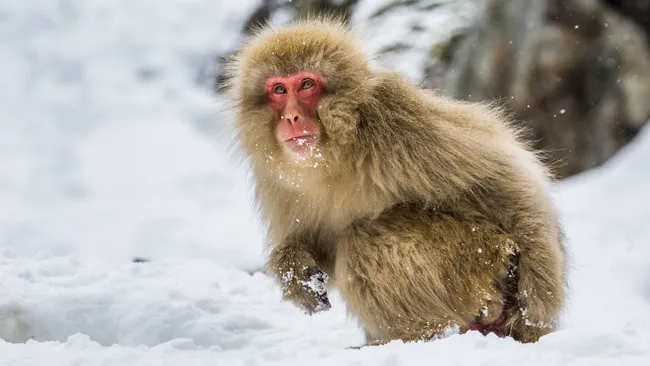Fossil spore and pollen data reveal our early ancestors evolved in cold, dry environments, with some even colonizing Arctic regions.
When most people picture our early primate ancestors, they imagine creatures leaping from branch to branch in warm, tropical jungles. But new research paints a different picture — one where primates endured icy, unforgiving environments.
As an ecologist who has worked with wild chimpanzees in Uganda and lemurs in Madagascar, I’m always drawn to the question of how ancient habitats shaped our lineage. These findings challenge decades of assumptions about the landscapes in which our ancestors first emerged.
The story of human evolution is central to understanding our own identity. The same environmental pressures that molded our earliest relatives continue to influence us — and will shape our future. Climate has always been a powerful driver of life on Earth, determining which species thrive, which adapt, and which vanish. In today’s warming world, lessons from these ancient struggles are more relevant than ever.
A cold beginning
A recent study led by Jorge Avaria-Llautureo at the University of Reading reveals a surprising truth: early primates did not evolve in tropical rainforests, but in colder, drier landscapes. These harsh conditions likely played a key role in forcing them to adapt, spread, and eventually diversify.
It took millions of years before primates reached the tropics. Interestingly, warmer global climates did not necessarily speed up their expansion or diversification. Instead, dramatic shifts between wet and dry periods drove evolutionary innovation.
One of the earliest known primates, Teilhardina, was a tiny tree-dweller weighing just 28 grams — comparable to the smallest living primate today, Madame Berthe’s mouse lemur. Fossils show that unlike most mammals of its time, Teilhardina had fingernails instead of claws, giving it the ability to grip branches and manipulate food. Appearing around 56 million years ago, roughly 10 million years after the dinosaurs disappeared, this species spread rapidly from North America into Europe and Asia.
The tropical-assumption made sense — after all, most primates alive today live in lush, equatorial forests, and most fossils have been uncovered there. But by analyzing ancient pollen and spores from fossil sites, scientists discovered that the climate at those locations was not tropical when primates first lived there. In fact, their true origins trace back to North America — an unexpected twist, given that no primates live there today.
Some even managed to colonize the Arctic. To survive harsh winters and seasonal food shortages, these early primates may have relied on strategies similar to modern mouse lemurs and dwarf lemurs: lowering their metabolism, or even hibernating.
Living in unpredictable environments would have favored species that could travel widely in search of food and shelter. Our surviving primate relatives likely descend from these adaptable, mobile lineages, while those that could not adjust left no descendants.
Lessons for today
Studying how extinct primates responded to ancient climate shifts is vital for understanding modern conservation. If we want to protect primates today, we need to anticipate how they will respond to habitat destruction and global warming. Deforestation and human activity not only destroy the spaces they need but also trap populations in fragmented areas, reducing their genetic diversity and capacity to adapt.
Yet knowledge alone isn’t enough. Protecting the future of primates — and ourselves — requires both political commitment and changes in human behavior. Ending destructive practices like bushmeat hunting and reversing habitat loss are critical steps. Without them, every primate species on Earth, humans included, faces an uncertain future.
